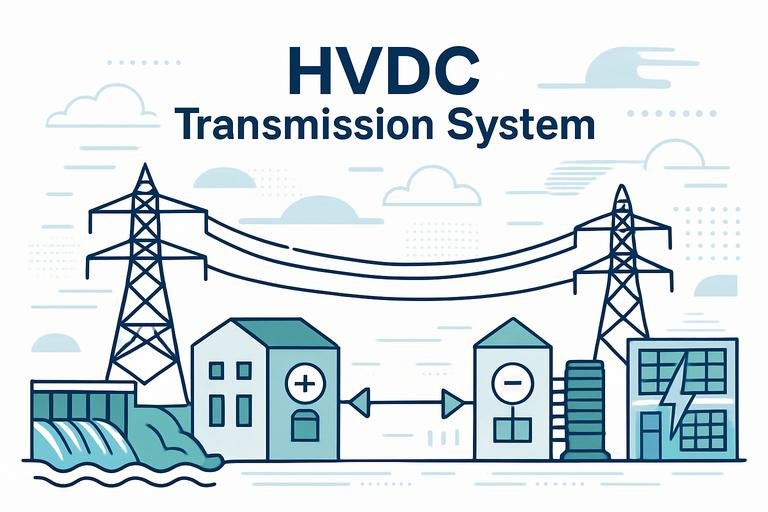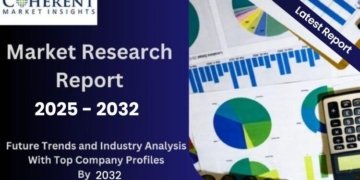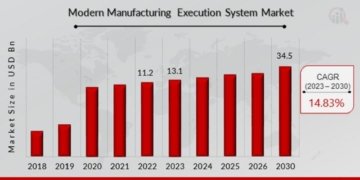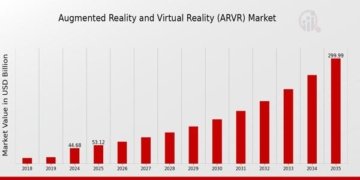The global high-voltage direct current (HVDC) transmission system market is set for a substantial expansion, projected to grow from an estimated USD 22.9 billion in 2025 to USD 64.4 billion by 2035, demonstrating a robust Compound Annual Growth Rate (CAGR) of 10.9% over the forecast period. This significant growth is primarily propelled by the escalating demand for efficient, long-distance power transmission, critical for integrating burgeoning renewable energy sources and modernizing aging grid infrastructures worldwide.
HVDC systems are increasingly vital in reducing transmission losses and enhancing power transfer capabilities, particularly from remote offshore wind farms and vast solar energy installations. The imperative for decarbonization and energy security, coupled with substantial investments in large-scale energy infrastructure, are reinforcing the pivotal role of HVDC technology within national energy strategies.
Increased Market Demand: Get In-Depth Analysis and Insights with Our Complete Report!https://www.futuremarketinsights.com/reports/high-voltage-direct-current-hvdc-transmission-systems-market
Key Drivers and Technological Advancements
The shift towards renewable energy integration is a paramount driver. As countries commit to net-zero emission targets, the ability of HVDC to transmit large amounts of power with minimal losses from geographically dispersed renewable energy projects (like the DolWin3 project in Germany, connecting North Sea offshore wind turbines) becomes indispensable. The International Energy Agency (IEA) reported a 2.4% rise in global electricity demand in 2022, underscoring the need for efficient transmission solutions. HVDC systems, such as India’s Raigarh-Pugalur HVDC link (6,000 MW capacity) and China’s ±1100 kV Changji-Guquan UHVDC project (12,000 MW capacity), are exemplary in addressing this surging demand.
Technological advancements, particularly in Voltage Source Converters (VSCs), ultra-high-voltage (UHV) technologies, and scalable modular systems, are shaping the market’s future. The increasing emphasis on bio-based insulating materials, automated installation processes, and international grid interconnection initiatives are also gaining traction. Furthermore, investments in digital monitoring and predictive maintenance tools are enhancing system reliability and lifecycle efficiency, reinforcing the market’s growth.
Market Segmentation Highlights
The HVDC transmission products segment leads the market, holding a substantial 72% share in 2025. This dominance is attributed to the global shift towards renewable energy integration, requiring efficient long-distance power transmission and the ability to interconnect asynchronous power grids for enhanced stability and flexibility.
Subsea deployment is projected to witness rapid growth with a CAGR of 9.5% from 2025 to 2035. This segment is critical in Europe and Asia for transmitting power across vast water bodies, especially for offshore wind farms. Overhead, underground, and combination deployment modes offer flexibility in meeting diverse geographical and environmental requirements.
In terms of application, Energy Transmission & Distribution holds a dominant 49% market share, underscoring its central role in modern HVDC systems by enabling cost-effective transmission of electricity from renewable resources to consumption centers and enhancing grid stability.
Competitive Landscape: Innovation and Strategic Partnerships
The HVDC transmission systems market is characterized by intense competition, with players focusing on advanced technology, efficiency, scalability, and integration capabilities.
Tier 1 Vendors, including Siemens AG, GE Vernova (GE Grid Solutions), Hitachi Energy Ltd., and ABB Ltd., command 35%-40% of the market. These global giants offer comprehensive, end-to-end HVDC solutions, from design to maintenance. They heavily invest in R&D, focusing on VSC and modular multilevel converters, and often partner with governments and utilities for large-scale projects like Germany’s SuedLink or China’s UHVDC systems.
Tier 2 Vendors, such as Prysmian SpA and Mitsubishi Electric Corporation, hold 30%-35% of the market. They specialize in regional markets, providing components like cables, transformers, or control systems. Their strategy often involves strategic partnerships with Tier 1 vendors and catering to regional interconnections and offshore wind farm projects.
Tier 3 Vendors, comprising smaller firms and new entrants, account for 25%-30% of the market. They focus on niche components like insulation or circuit breakers, offering specialized solutions and localized support, often fostering innovation within the industry.
Recent Industry Updates Highlight Collaboration and Expansion:
In November 2024, Siemens partnered with a major LATAM utility on an HVDC interconnection project to integrate 3 GW of renewable energy across two countries, emphasizing sustainable energy transition.
GE Vernova announced the completion of an HVDC project in Brazil in October 2024, connecting a 2.5 GW renewable energy cluster to the national grid, showcasing its commitment to LATAM’s energy transition.
Toshiba revealed its involvement in a 1.2 GW HVDC project in Colombia in October 2024, aimed at connecting remote wind and solar farms, reinforcing its dedication to renewable energy infrastructure.
Regional Dynamics: Asia-Pacific and North America Lead Growth
While challenges such as the high cost of converter stations and complex integration with aging AC grid infrastructures exist, ongoing technological advancements and government support are poised to mitigate these hurdles.
India is projected to achieve a robust CAGR of 12.9% from 2025 to 2035, driven by rapid industrialization, urbanization, and ambitious renewable energy targets requiring significant HVDC investments. China, with an 11.8% CAGR, is heavily investing in extensive UHVDC projects to transport power from western regions to the energy-hungry east, aligning with its goal of 90% non-fossil fuel electricity capacity by 2035. The USA (9.2% CAGR) is expanding HVDC systems to connect remote renewable energy sources to urban centers, with substantial investments in grid modernization and clean energy infrastructure. South Korea and Germany are also expected to demonstrate steady growth, with CAGRs of 11.0% and 9.4% respectively.
The global HVDC transmission system market is in a period of dynamic growth, driven by the indispensable need for efficient and reliable power delivery in an increasingly electrified and decarbonized world.
Keep Up with Market Trends: Access Your Sample Report! https://www.futuremarketinsights.com/reports/sample/rep-gb-1209
Have a Look at Related Research Reports:
USA HVDC Transmission Systems Market: https://www.futuremarketinsights.com/reports/usa-hvdc-transmission-systems-market
Korea HVDC Transmission System Market: https://www.futuremarketinsights.com/reports/hvdc-transmission-system-industry-analysis-in-korea
Australia HVDC Transmission Systems Market: https://www.futuremarketinsights.com/reports/australia-hvdc-transmission-systems-market
Contact Us:
Future Market Insights Inc.
Christiana Corporate, 200 Continental Drive,
Suite 401, Newark, Delaware – 19713, USA
T: +1-347-918-3531
For Sales Enquiries: sales@futuremarketinsights.com
Website: https://www.futuremarketinsights.com
About Future Market Insights (FMI)
Future Market Insights, Inc. (ESOMAR certified, recipient of the Stevie Award, and a member of the Greater New York Chamber of Commerce) offers profound insights into the driving factors that are boosting demand in the market. FMI stands as the leading global provider of market intelligence, advisory services, consulting, and events for the Packaging, Food and Beverage, Consumer Technology, Healthcare, Industrial, and Chemicals markets. With a vast team of over 400 analysts worldwide, FMI provides global, regional, and local expertise on diverse domains and industry trends across more than 110 countries. Join us as we commemorate 10 years of delivering trusted market insights. Reflecting on a decade of achievements, we continue to lead with integrity, innovation, and expertise.
This release was published on openPR.



















